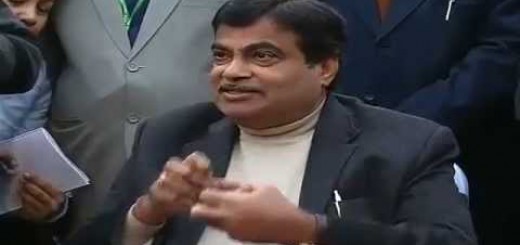Self-driving truck set to hit Indian roads
While the global giants like Uber, Google and Tesla figure out how to make self-driving truck, a Bengaluru-based startup believes it can beat them to the market.
Name of the Company: Flux Auto
Name of Founder (s): Pranav Manpuria and Abhishek Gupta
City: Bengaluru
Revenues: NA
Headcount: 24
Industry: Autonomous vehicles
Investors Details & Amount raised: Bootstrapped
While the global giants may have decided to stay away from the dust and pothole-ridden roads of India in their race to be hailed as the pioneers of self-driven technology (self-driving truck), a young Bengaluru-based startup believes the chaotic, poorly-kept roads of India are ideal grounds for them to master their self-driving technology.
“For us, the more chaotic the roads are, the more data we get and the more trained our algorithm becomes. Indian roads are helping us to make a far sturdier and sophisticated algorithm for our self-driving technology,” says Flux Auto, cofounder, Pranav Manpuria.
Kept under stealth mode till two months back, this 11-month old startup will launch its pilot programme in early February next year. Started in January 2016 with the primary objective of commercialising self-driving technology in order to cater to the present needs of the market, the young founders significantly differed in their approach to developing self-driving technology in comparison to the global Goliaths like Google, Uber, and Tesla.
“I had seen self-driving technology being developed by companies like Google and Uber for years without any sign of them getting to the market. After understanding the core technology that this industry is founded on, I was convinced that this was something we could succeed in building. However, instead of cars we had decided to focus on developing self-driving kits for trucks from Day One. I am really proud of the team for getting us this far with virtually no resources,” says Manpuria.
While companies like Volvo, Daimler along with Uber, Tesla, Waymo, etc., are all getting into autonomous trucks as a faster way to commercialise the technology, Manpuria and his cofounder are not worried.
“Problem with most of these companies is that over the past 10 years they have focused on cars and after spending over a billion dollars they are now changing their focus to trucks. They will take time to understand the market,” says a confident Manpuria.
Another big differentiator between these companies and Flux Auto’s understanding of the need of the market is that the Indian startup is not building autonomous trucks, but a self-driving kit which can be retrofitted in the trucks already plying on the roads.
“When we started out we were not sure of the technology, but we were certain about making this technology for trucks and make it like an accessory and not something which needs to be fitted during the production line assembly of trucks. There are already millions of vehicles on the road and we wanted to capture that market too,” says Manpuria.
Autonomy: Necessity over aspiration
Challenging the narrative of the self-driving industry at each step, the founders of Flux Auto decided to develop Level 3 autonomy for trucks – instead of enabling a vehicle to drive itself throughout with zero human interference. ‘Level 3’ autonomy needs no human controlling the drive, till the time the vehicle is playing on highways.
“‘Level 5’ of autonomy needs no human driver; not even a steering wheel. It is a humungous undertaking. We will get there eventually, but first we want to do ‘Level 3’ and we want to do it really well. This does not mean it is a ‘driver assist’ system, but one that takes full control of the vehicle and makes intelligent decisions like a human. Our goal is not to replace the driver, but to augment him, and help him do his job better. People may need ‘Level 5’ down the line, but the need of the hour is ‘Level 3’ autonomy,” says Manpuria.
The truck manufacturers seem to agree. Manpuria shares that the startup is in the final stages of talks with two OEMs. “I cannot share the names, but one of them figures amongst the top five OEMs globally and another tops the charts in Indian markets,” says Manpuria.
The pilot in February will test the kit on 60 vehicles. The team has also been provided a new truck to train the autonomy of its kit; till now, being bootstrapped, the team has been working on a 6-year old truck they lovingly christened ‘General Lee’ from the old American action-comedy television series, The Dukes of Hazzard. The new vehicle has already been given the name ‘The Mystery Machine’ of the Scooby-Doo fame.
“Currently, that truck – The General Lee – is able to self drive in a controlled environment. It does things like lane keeping, lane changing, curved road, speed signs, stop signs and more. Our goal is to have our vehicle driving itself on highways,” shares Manpuria.
Another blessing in disguise for the startup is that unlike companies caught in regulatory wrangles over fully autonomous vehicles, the startup may not meet any legal hurdle.
“There is always going to be a human in the driver seat and in any situation where we may not be the best driver, the system will make a loud noise and relinquish control to the human. So while we can have our system up and running, the rich companies can fight regulations by which time we will be ready to launch a more autonomous system,” says Manpuria.
The startup does have a roadmap to upgrade the level of autonomy of its system. “It will take us 18-24 months to get to ‘Level 4’ out once we roll out ‘Level 3’ devices. We have a pretty clear roadmap in our heads to get to more advanced levels of autonomy,” adds Manpuria.
The primary goal: Commercial viability
While global giants are all using LIDAR (Light Detection and Ranging) as the most precise system to develop their self-driving technology on; the exorbitant cost is turning out to be prohibitory in the plans of commercialisation. Since commercialisation has been the primary objective of Flux Auto, the startup ditched LIDAR in favour of developing its own sensors.
“Our entire sensor system costs 10% of the cost of a single LIDAR – and without the high processing requirement. Our goal of commercialisation can be achieved only if the price point is realistic. This took us on a search for vision systems and other sensors,” says Manpuria.
Flux Auto uses vision systems (cameras) and other sensors – the device currently operates with six cameras – one forward-facing, one rear-facing and four deployed on the vehicles’ sides. But can the system provide as much precision as the one using LIDAR? Manpuria says that the system is highly reliable.
“We are not benchmarking against LIDAR. The calculations that we are making is to check if the data generated is meaningful and sufficient. The question is if we can make sense of everything happening around the vehicle? And, we can say it with conviction that we know everything which is happening and there is nothing that we cannot see,” claims Manpuria.
The startup has set a target of deploying its kits on 2500 vehicles by August 2018.
Relieve, not replace
Being a ‘Level 3′ system, the system is meant to self-drive during the long-haul distances which the commercial trucks undertake daily in their journeys. The drivers are expected to take over once the vehicle gets off the highway. This is expected to increase the drivers’ productivity, reduce accident rates, and help the companies generate more revenues.
“With our system the driver is less tired since we are doing the heavy lifting. Instead of the 10-hour schedule, the drivers can drive for 16 hours, which results in 40 extra hours of productivity. Also, another goal is to reduce not just accidents, but also the incidence rate. When a truck meets an incident, it gets sent to repair workshop where the company loses revenue for every hour that the truck is out of service. Our system would be able to save that revenue as well as the money spent on repairs,” says Manpuria.
Manpuria says the system employs a feature called ‘fleet intelligence’ which allows the company to learn from the mistakes of one system and sent the upgrade to all other systems. “This ensures that no other vehicle makes the same mistake made by one,” adds Manpuria.
The company is targeting international roads initially and then would bring the system to India in the first eight months of the launch.
“We are going to start with targeting south and central American markets and South-East Asian countries. North America and European countries we are not keen on yet because the goliaths are there and we are not looking to fight them yet. We do not have India in the first rollout because we do want uniform roadways for the first launch,” says Manpuria.
Source: https://goo.gl/37jyJi




Recent Comments